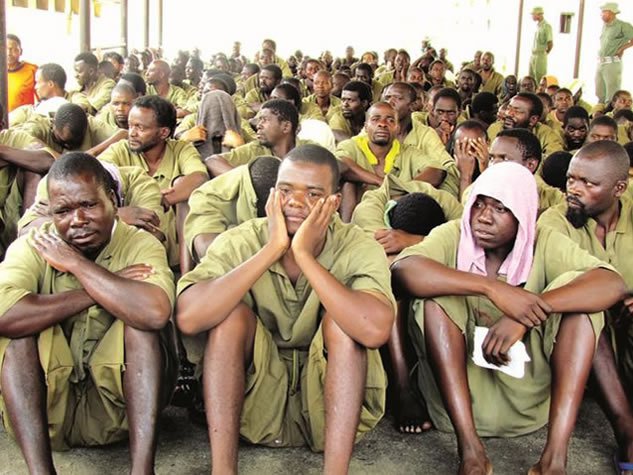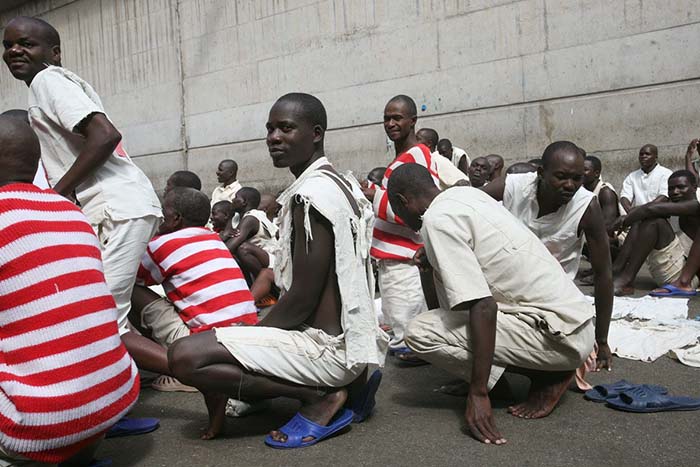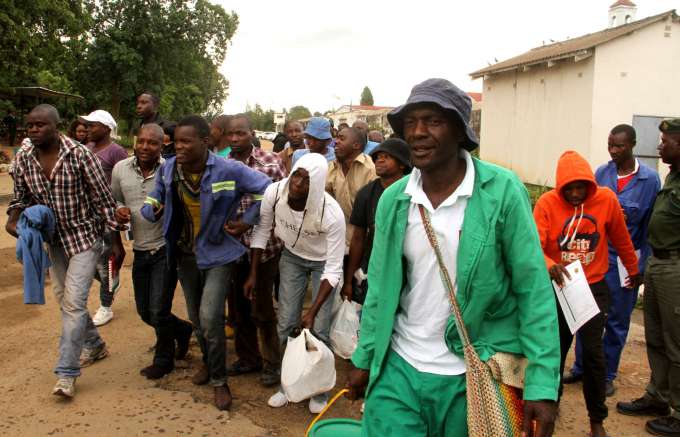By Bruce Ndlovu
Despite the release of 3 000 prisoners through the Presidential Amnesty last year, Zimbabwe’s prisons are still overpopulated, with the country’s correctional facilities carrying 2 382 inmates above their recommended capacity.

Figures released by the Zimbabwe Prison and Correctional Services during the Zimbabwe International Trade Fair held in Bulawayo last week showed that as of last week, Zimbabwe’s prisons had 19 382 prisoners against a carrying capacity of 17 000.
Of these 18 928 of those inmates are male, of which 15 508 have already been convicted while
3 421 are still waiting for the finalisation of their court cases.
The figures showed the country has 458 female inmates, with 273 of those serving substantive prison sentences while 185 are on remand. The country has 113 juvenile prisoners, with 105 boys and eight girls incarcerated. A total of 69 inmates are at the country’s only open prison facility in Connemara, Gweru. ZPCS also has 316 detained mental patients and 408 criminal mental patients.
In an interview, ZPCS spokesperson Chief Correctional Officer Meya Khanyezi said the country’s prison population was always swelling because of people in remand waiting for the finalisation of their cases.
She said one of the ways in which pressure on the country’s correctional facilities could be relieved was by facilitating projects that give inmates skills to function and flourish beyond prisons walls.
“The solution is for the community to partner with us because we are saying we are promoting development through corrections. We have an open door policy and we are saying people should come on board and help us. However, most of the money that we need comes from the society but society is reluctant because of the crimes that these people would have committed. We’re saying these people deserve forgiveness so that both they and their victims move on,” she said.
Chief Correctional Officer Khanyezi said the ZPCS had shifted focus, as the country’s prison services were no longer solely punitive but instead put more effort in rehabilitating prisoners under their watch.

“We now want to create an environment in which we rehabilitate prisoners rather than just punish them. We’re saying that we want to take away your freedom and not your life. You don’t have to end your life because you have been incarcerated. You will just continue with it but your freedom is what we withdraw because of your crimes,” she said.
Chief Correctional Officer Khanyezi said through various vocational activities, the ZPCS was encouraging prisoners to think of life after prison.
“You don’t have to abandon your fatherly duties because of prison. You can continue providing through the various programmes that we have. We usually reduce the number of years that people serve keeping in mind their behaviour in prison,” she said.
While life in prison can be tough, Chief Correctional Officer Khanyezi said the ZPCS was doing its best to ensure inmates had a semblance of a normal life while behind bars.

“Recently, for example, we took those prisoners serving at least 40 years and over to ZBC. These are people in our choir. It was fantastic to see the looks on their faces because in prison they have no mirrors so they were surprised by the way they now look because they have not seen themselves in a long time. Such occasions show the effort being made by the ZPCS to make sure those in our custody remain human and don’t get completely alienated from society,” she said.
Despite the overwhelming majority of prisoners being men, Chief Correctional Officer Khanyezi said female inmates seemed to be the most alienated from society, as they were not showered with the affection and care that their male counterparts receive.
“The problem we have is the female segment of our prison population. With men you usually find they have one or two visitors coming but that is not the case with women. They rarely have visitors because they have been abandoned. It’s not the same for men. They get visits from their spouses.
Maybe it’s because men can go on with their lives after their wives go to prison but women seem more steadfast and the way they behave when their husbands are ill is the same way they behave when they are in prison,” she said. Sunday News






